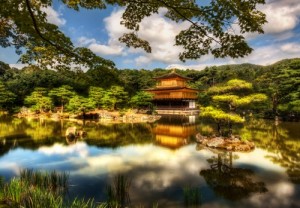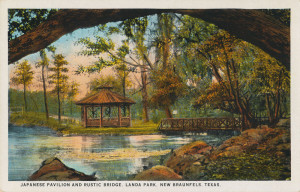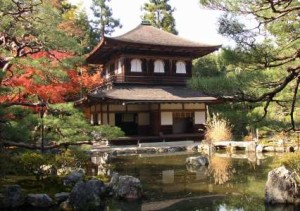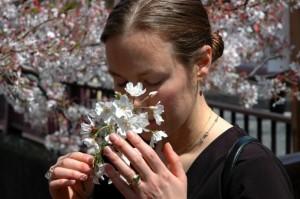Kinkaku-Ji (Golden Pavilion) in Kyoto, Japan
It is interesting how much Japanese culture and art have impacted perfume. There are many perfumers who have spent time in Japan and found inspiration for some of their best fragrances. One of those perfumers who fall into this category is Dawn Spencer Hurwitz. Ms. Hurwitz first used this background to create what is probably my favorite of all her fragrances Bancha. It is a cleverly constructed tea perfume which contains no tea, which I think is sort of an interestingly Japanese kind of aesthetic. Her latest release is again inspired by her travels in Japan and again smells like a note that is not present in the ingredients.
Matsu, which means pine tree in Japanese, is the name and it is that titular note which seems very present until you find out there isn’t any pine in the note list. When I spoke with Ms. Hurwitz about Matsu she told me that she was after a fragrance that combined the atmospheric and the architectural. I told her when I wore it I felt like I was like meditating in a Japanese pavilion with the smells of a pine forest surrounding the structure being brought to you on the breeze. To create this combination of atmospheric architecture Ms. Hurwitz would use Iso E Super as the source of the woody structure and that turns out to be an excellent choice as that does provide the architectural pavilion for everything else to come as the breeze carries the smells of the surrounding atmospheric forest and nearby pond.
Ginkaku-ji (Silver Pavilon) in Kyoto, Japan (Photo: Jake Davies)
There is an inherent spicy facet to good wood used in construction and in Japanese construction cedar is the main building material. If Ms. Hurwitz had chosen to use a regular source of cedar I think she would have rendered Matsu too delineated. By choosing Iso E Super she instead does pick up that spicy aspect and uses the cedar as an accent almost as an olfactory illusion to draw your senses in that direction. I have always found an inherent minerality deep in Iso E Super and that is also apparent in the early going of Matsu to me, too. Now that I have settled down in my pavilion and centered myself it is time to open my senses to see what I can sense. In the early going Ms. Hurwitz uses a fabulous bergamot to attune my nose to search beyond the obvious woods. Once I begin to do that I find the green accords of pine, foliage, and water lily. Because this is a pine accord and not pine itself there is an opaque freshness that feels like it is coming from a distance. The same goes for the water lily accord as it again uses a combination of notes to bring semi-transparent floralcy on the mist off the water to my nose. Ms. Hurwitz fills in all the remaining interstitial space with a green leafy accord.
Dawn Spencer Hurwitz
Matsu has overnight longevity on me but to be really honest it is the Iso E Super which I mostly smell the next morning. Matsu, all together, before it ends up there developed for 8-10 hours on my skin with modest sillage.
There is a mischievous part of me that wants to combine Bancha and Matsu and have an olfactory Japanese Tea Ceremony on my skin. Thankfully that thought is fleeting because Matsu deserves to be appreciated all on its own. I know that for this Sunday morning I am going to spray myself liberally with Matsu and close my eyes and imagine the scene from a Japanese pavilion while sitting on my deck.
Disclosure: This review was based on a sample of Matsu provided by DSH Perfumes
Thanks to Dawn Spencer Hurwitz and DSH Perfumes we have two draws. For our US readers a 10mL EDP spray bottle of Matsu. For our international readers a 10mL rollerball of Matsu oil. To be eligible I want you to use your imagination and imagine you are meditating in Japanese Pavilion and leave a comment telling me what you smell. Please identify if you are US or International. The draw ends on July 10, 2013.
We announce the winners only on site and on our Facebook page, so Like Cafleurebon and use our RSS option…or your dream prize will be just spilled perfume.
–Mark Behnke, Managing Editor




